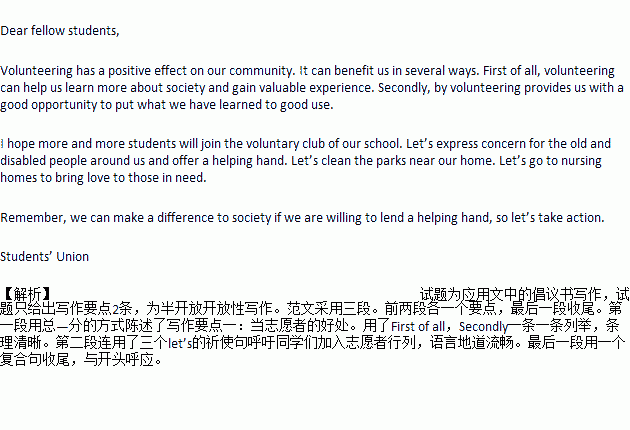题目内容
假设你是某外国语学校的学生会主席。最近, 为了弘扬雷锋精神, 你校决定开展多项志愿服务活动。请用英语写一篇倡议书, 发表在校英语报上, 号召同学们加入本校的志愿者俱乐部。内容包括:
1. 陈述当志愿者的好处;
2. 向同学们发出几点倡议。
注意:1. 词数100左右;
2.可适当增加细节, 使行文连贯
3.开头已给出, 不计入总词数。
Dear fellow students,
Volunteering has a positive effect on our community. __________________________________________________
____________________________________________________________________________________________
____________________________________________________________________________________________
____________________________________________________________________________________________
____________________________________________________________________________________________
____________________________________________________________________________________________
Students’ Union
 天天向上一本好卷系列答案
天天向上一本好卷系列答案 小学生10分钟应用题系列答案
小学生10分钟应用题系列答案
